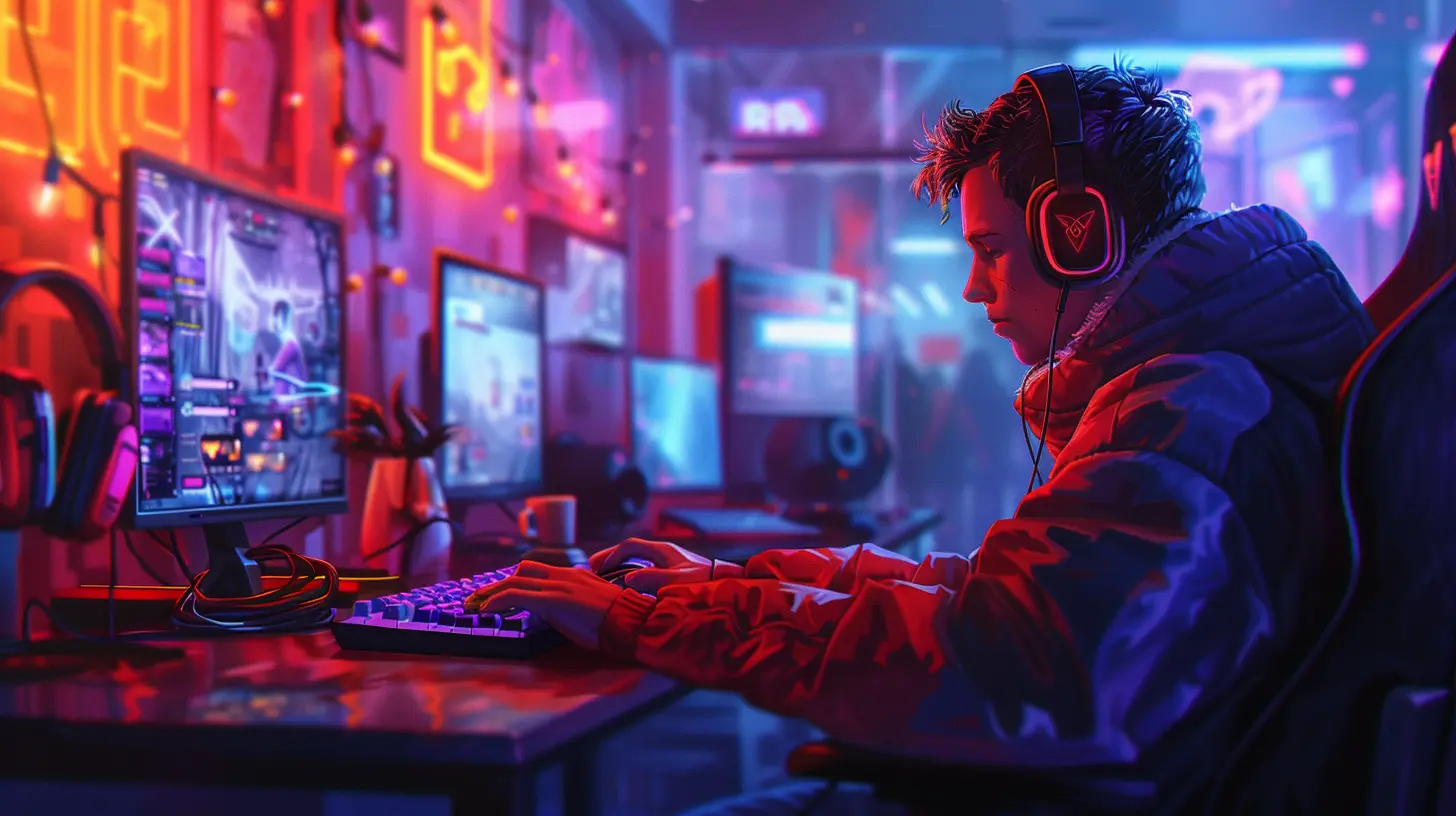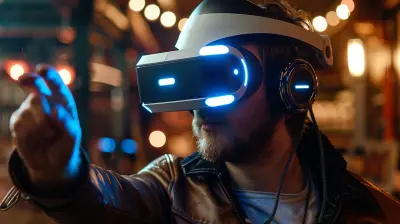How Developers Are Prioritizing Mental Health in Game Design
20 November 2025
Gaming used to be all about high scores, fast reflexes, and jaw-dropping graphics. Now? Developers are peeling back the digital curtain and asking a deeper question—how does this game make people feel mentally and emotionally?
Gone are the days when mental health was an afterthought (if it was even considered at all). With rising conversations around burnout, anxiety, and depression—both in players and within the industry—it’s about time someone hit pause and looked at how video games impact our well-being. And guess what? Game developers are doing exactly that.
Let’s dive into how developers are prioritizing mental health in game design, and why that shift matters more than ever.
Why Mental Health in Gaming Matters Now More Than Ever
Let’s face it—2020 flipped everything upside down. With the pandemic came isolation, uncertainty, and a massive shift toward digital spaces. People weren’t just playing games for fun anymore—they played to escape, to connect, and to cope.And that massive surge in gaming brought something else to light: games have a real impact on mental health.
Games can soothe anxiety or trigger it. They can foster community or make someone feel alone. Suddenly, the stakes became more than just virtual. Mental wellness became the new high score everyone wanted to reach.
The Shift in Industry Mindset
From “Just Entertainment” to Emotional Experience
For decades, video games were brushed off as pure entertainment. But developers are waking up to the truth—games are emotional ecosystems. Every mechanic, sound, and storyline can tug at heartstrings or ease a troubled mind.Look at games like Celeste or Hellblade: Senua’s Sacrifice. These aren’t just fun games. They put mental health front and center—portraying anxiety, grief, psychosis, and depression honestly and respectfully.
And more importantly, they’re giving players tools to connect with their own feelings. That shift? It’s revolutionary.
Developers Are Listening (Finally)
Player feedback is no longer just about bugs or graphics. Gamers speak up about how a game makes them feel, and developers are tuning in.Studios are actively collaborating with mental health experts, consulting psychologists during development, and even hiring in-house wellness advisors. That’s a huge leap forward from the “crunch till you drop” mentality that plagued developers for years.
Game Mechanics That Support Mental Health
So how exactly are developers baking mental health into their games? It’s not all therapy journals and mindfulness mantras—though some games do use those tools too. Let’s break it down.Safe Spaces and Chill Modes
Ever tried a game that lets you turn off combat or slow down the pace?Titles like Animal Crossing and Stardew Valley champion this chilled-out gameplay. They ditch the stress and create calm, meditative environments. You don’t need to “win”—you just exist, garden, talk to neighbors, maybe catch a fish. That’s it.
Other games like Celeste offer assist modes, where players can tweak difficulty settings so they’re not overwhelmed. Want to skip a hard section or move at your own speed? You’re in charge.
That kind of flexibility lowers stress levels and makes playtime... well, actually feel like playtime.
Storylines That Hit Home
Narrative-driven games are leaning into emotional storytelling more than ever. Think Life is Strange, Spiritfarer, or GRIS.These games explore heavy topics—loss, anxiety, trauma—but they do it with heart and nuance. They don’t sensationalize mental health struggles. Instead, they offer meaningful portrayals that help players feel seen and understood.
It’s like picking up a mirror and seeing your own feelings reflected back at you, pixel by pixel.
Mindful Mechanics
Some games go meta with mental health tools.Take Kind Words, for example. Players write real, anonymous letters to one another, offering kind thoughts and support. That’s it. No battles. No bosses. Just good vibes.
Or consider Sea of Solitude, where the game’s design mimics the emotional journey of the protagonist. As her mental state improves, the world around her transforms. It’s an emotional weather report in game form.
These mindful design choices create real emotional engagement. It’s not just about playing—it’s about feeling.
Mental Health in the Studio: From Burnout to Balance
It’s not just the players that matter. Developers themselves are under mental strain too.Ending Crunch Culture
For years, the gaming industry ran on “crunch”—those soul-sucking, all-nighter marathons before launch. Sure, it got games out on time, but at what cost?Burnout, anxiety, broken relationships, and crumbling mental health were the hidden price tags.
Now, studios are pushing back. Indie developers and even AAA giants like CD Projekt Red are spotlighting healthier workflows. More paid time off, mental health days, therapy stipends—these are becoming real perks, not just buzzwords.
Diversifying the Dev Room
Representation matters, not just in games but behind the scenes too.When diverse voices are part of development—across gender, race, identity, and mental health background—the stories that emerge are more empathetic and genuine.
Games like Depression Quest, Night in the Woods, and If Found… offer deeply personal experiences that couldn’t have come from a cookie-cutter team. The more perspectives you bring to the table, the less likely you are to overlook the lived mental experiences of your audience.
Community and Connection: The Social Side of Gaming
Online Communities That Heal
Gaming has always been social, but now, it's becoming a platform for emotional support too.Games like Final Fantasy XIV or Minecraft host massive online communities that double as friendship hubs. Players check in on each other. They talk life. They host in-game funerals, birthday parties, and mental health meetups. It’s wholesome as heck.
When game devs support these communities—from moderated chat tools to in-game events that promote well-being—they amplify that healing power.
Streamers and Mental Health Advocacy
It’s not just about the games themselves—it's about who’s playing them.Streamers and content creators are leading the charge on mental health conversations. They talk openly about their own struggles, host charity streams for mental health causes, and even provide on-screen resources for viewers.
Developers are taking note, creating partnerships with mental health organizations and embedding support links directly in-game. This feedback loop between creators, players, and devs is reshaping the culture around gaming.
Breaking the Stigma, One Pixel at a Time
Let’s be real—mental health still carries stigma. But games, with their immersive worlds and emotional depth, are helping break that barrier.When you walk a mile in a character’s boots, feel their fears, and face their demons, something powerful happens: empathy grows.
Games aren’t just teaching players how to shoot or solve puzzles. They’re teaching compassion, self-awareness, and emotional resilience.
And that shift might just be the most underrated power-up in gaming.
What Does the Future Hold?
So, where do we go from here?It’s clear that mental health is moving from “optional bonus” to “must-have feature” in game design. The next wave of developers is more emotionally intelligent, more aware, and more committed to making games that heal as much as they entertain.
Expect to see more collaborations with mental health professionals, more wellness-oriented mechanics, and more honest, heartfelt storytelling.
And the best part? This is only the beginning.
Final Thoughts
Developers are finally taking mental health seriously—and it’s changing the gaming landscape for the better.Whether it’s through chill gameplay, diverse storytelling, or healthier work environments, the industry is leveling up in a way that matters deeply. Because at the end of the day, games aren't just distractions—they're digital ecosystems that shape how we feel, think, and connect.
So next time you boot up a game and feel a little more calm, a little more seen, or just a little more okay—that’s not a bug. That’s design.
all images in this post were generated using AI tools
Category:
Gaming And Mental HealthAuthor:

Whitman Adams
Discussion
rate this article
1 comments
Eli Pope
It's refreshing to see developers prioritizing mental health in game design. Creating inclusive, supportive environments can significantly enhance player experience and well-being. This is a crucial step forward.
November 21, 2025 at 4:05 AM


